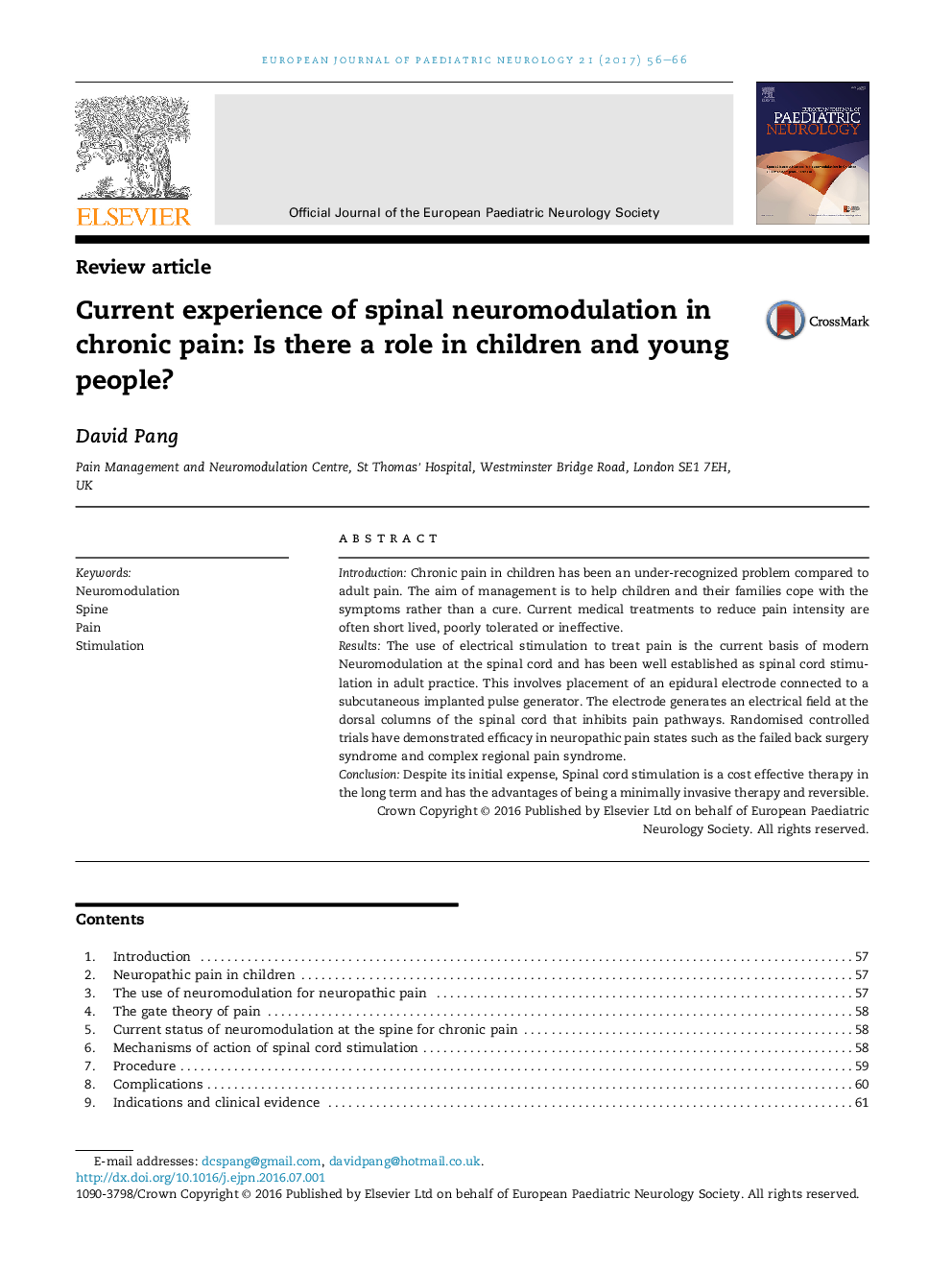| Article ID | Journal | Published Year | Pages | File Type |
|---|---|---|---|---|
| 5628918 | European Journal of Paediatric Neurology | 2017 | 11 Pages |
â¢Chronic neuropathic pain in children is under-recognized and current therapies have limited efficacy.â¢Limitations for paediatric use such as intraoperative parasthesia testing and MR compatibility have been overcome.â¢The ability to trial stimulation and its reversibility is a major advantage.â¢Mechanism of action based on interrupting nociception at the spinal cord.
IntroductionChronic pain in children has been an under-recognized problem compared to adult pain. The aim of management is to help children and their families cope with the symptoms rather than a cure. Current medical treatments to reduce pain intensity are often short lived, poorly tolerated or ineffective.ResultsThe use of electrical stimulation to treat pain is the current basis of modern Neuromodulation at the spinal cord and has been well established as spinal cord stimulation in adult practice. This involves placement of an epidural electrode connected to a subcutaneous implanted pulse generator. The electrode generates an electrical field at the dorsal columns of the spinal cord that inhibits pain pathways. Randomised controlled trials have demonstrated efficacy in neuropathic pain states such as the failed back surgery syndrome and complex regional pain syndrome.ConclusionDespite its initial expense, Spinal cord stimulation is a cost effective therapy in the long term and has the advantages of being a minimally invasive therapy and reversible.
